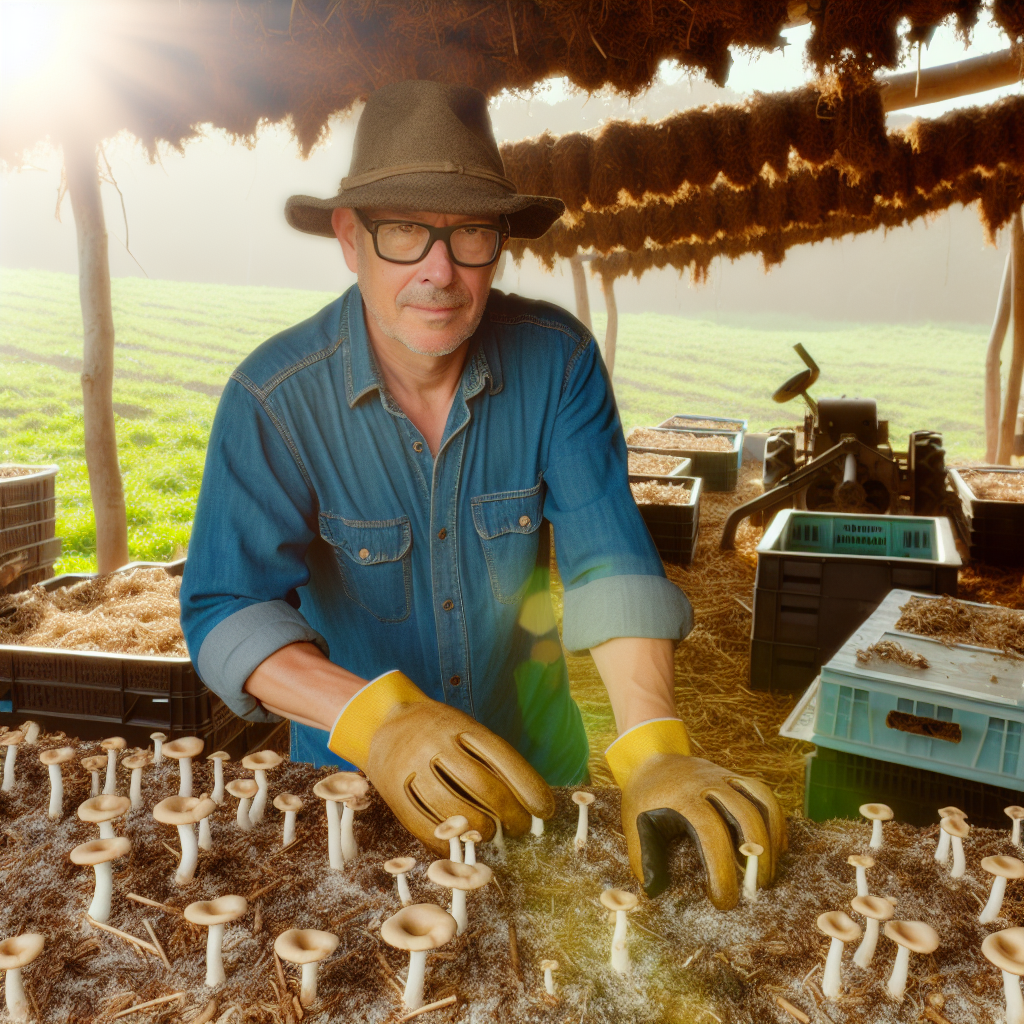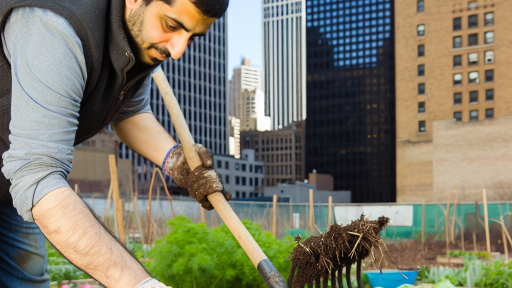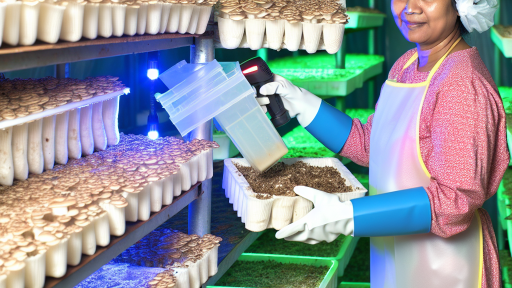Introduction to Sustainable Mushroom Agriculture
Sustainable mushroom agriculture emphasizes environmental health and resource efficiency.
This approach limits chemical inputs and prioritizes organic methods.
Farmers utilize waste products from other industries as substrates for mushroom cultivation.
By recycling materials, they contribute to waste reduction and sustainability.
Moreover, sustainable practices enhance soil health and biodiversity.
Integrating sustainable mushrooms into farming systems brings multiple benefits.
It supports local economies through job creation and increased food options.
Thus, mushroom farming can play a key role in achieving food security.
Types of Sustainable Practices
Sustainable mushroom farmers implement a variety of methods.
One common practice involves using organic compost for nutrient supply.
This natural fertilizer boosts growth and reduces reliance on synthetic options.
Additionally, some farms utilize integrated pest management techniques.
This strategy minimizes pesticide use while maintaining healthy crops.
Environmental Benefits
Sustainable mushroom agriculture offers numerous environmental advantages.
For example, it helps conserve water through efficient irrigation techniques.
Transform Your Agribusiness
Unlock your farm's potential with expert advice tailored to your needs. Get actionable steps that drive real results.
Get StartedMoreover, it reduces greenhouse gas emissions by promoting local production.
These efforts contribute to an overall decrease in carbon footprints.
Furthermore, sustainable practices restore and maintain soil fertility.
Economic Impacts
Transitioning to sustainable mushroom agriculture can boost profitability.
Farmers often see higher premium prices for organic products.
Additionally, sustainable practices can lower production costs in the long term.
This creates more resilient agricultural systems that withstand economic fluctuations.
Moreover, local food markets benefit from increased biodiversity.
Benefits of Sustainable Practices in Mushroom Farming
Environmental Benefits
Sustainable practices significantly reduce the environmental impact of mushroom farming.
They promote the efficient use of resources like water and energy.
Additionally, these methods minimize waste production and help preserve biodiversity.
By using organic waste for substrates, farmers can recycle nutrients effectively.
This practice enhances soil health and reduces the need for chemical fertilizers.
Economic Advantages
Implementing sustainable practices can lead to cost savings for mushroom farmers.
Farmers often find that they spend less on inputs, such as fertilizers and pesticides.
Furthermore, sustainable systems can create additional revenue through the sale of organic products.
Consumers are increasingly willing to pay a premium for sustainably grown mushrooms.
This growing market provides financial incentives for farmers to adopt sustainable methods.
Social Impact
Sustainable mushroom farming fosters community health and well-being.
By focusing on locally sourced materials, farms support local economies.
Moreover, these practices often provide safer working conditions for farm workers.
Farmers can contribute to the education and awareness of sustainable agriculture.
This awareness helps build a more informed consumer base.
Health Benefits
Mushrooms grown sustainably are often healthier for consumers.
Showcase Your Farming Business
Publish your professional farming services profile on our blog for a one-time fee of $200 and reach a dedicated audience of farmers and agribusiness owners.
Publish Your ProfileThey contain no harmful chemicals or pesticides, promoting better nutrition.
Additionally, the use of organic methods ensures clean soil and water.
Farming sustainably encourages the growth of more nutrient-dense mushrooms.
This results in products that are beneficial to overall health and well-being.
Organic Growing Mediums: Compost and Substrates
Importance of Organic Growing Media
Organic growing media play a critical role in sustainable mushroom agriculture.
They enhance soil health and promote the growth of nutritious mushrooms.
Moreover, they minimize the need for synthetic fertilizers and pesticides.
Types of Organic Growing Media
Compost is a widely used organic growing medium for mushroom cultivation.
It consists of decomposed organic matter and provides essential nutrients.
In addition, straw is another popular substrate that mushrooms thrive on.
Straaw is a renewable resource and offers a great habitat for fungal growth.
Compost: An Efficient Choice
Compost supplies a rich source of nutrients for mushroom mycelium.
It improves soil structure and water retention capabilities.
Farmers can make compost using kitchen scraps, garden waste, and manure.
S straw: A Versatile Substrate
S straw serves as an effective substrate due to its high cellulose content.
This cellulose is an ideal carbon source for many mushroom species.
Furthermore, incorporating straw reduces waste and promotes sustainability.
Benefits of Using Organic Substrates
Using organic substrates enhances biodiversity in growing environments.
It provides mushrooms with a more natural growing condition.
Additionally, organic practices can lead to higher quality and tastier mushrooms.
Challenges and Solutions
One challenge with organic growing media is contamination during cultivation.
Proper sterilization methods can prevent the introduction of harmful pathogens.
Investing in quality control and monitoring can also promote success.
Delve into the Subject: Seasonal Care Tips for Heirloom Gardens
Water Management Techniques for Mushroom Cultivation
Importance of Water in Mushroom Farming
Water plays a crucial role in mushroom cultivation.
It impacts mushroom growth, yield, and quality.
Therefore, effective water management is essential for success.
Utilizing Rainwater Harvesting
Rainwater harvesting offers a sustainable solution for water needs.
This technique collects rainwater from roofs and surfaces.
Farmers can store it for later use in cultivation.
Consequently, this practice reduces dependence on groundwater.
Implementing Drip Irrigation Systems
Drip irrigation systems deliver water directly to the plants.
This targeted approach minimizes water loss through evaporation.
Additionally, it ensures that mushrooms receive adequate moisture.
Farmers like Emily Carter have successfully adopted this method.
Monitoring Soil Moisture Levels
Regular monitoring of soil moisture promotes healthy growth.
Using soil moisture sensors provides valuable data.
This information helps in deciding when to irrigate.
Moreover, it prevents overwatering, reducing risks of diseases.
Recycling Water in Cultivation Processes
Recycling water can significantly improve sustainability.
Showcase Your Farming Business
Publish your professional farming services profile on our blog for a one-time fee of $200 and reach a dedicated audience of farmers and agribusiness owners.
Publish Your ProfileFarmers can reuse water from washing mushrooms or equipment.
This practice decreases overall water usage and cost.
Moreover, it promotes a circular approach in farming.
Adopting Water-Conserving Techniques
Water-conserving techniques can enhance efficiency in farming.
Examples include mulching and using organic matter in soil.
These methods retain moisture and reduce evaporation.
Consequently, they contribute to healthier mushroom production.
Gain More Insights: Building A Seed Bank On Your Small Farm
Integrated Pest Management in Mushroom Farms
Introduction to Integrated Pest Management
Integrated pest management (IPM) is essential for sustainable mushroom farming.
This approach combines various management strategies.
It aims to control pests while minimizing environmental impact.
Benefits of Integrated Pest Management
IPM enhances crop yields and quality.
It reduces the reliance on chemical pesticides.
Additionally, it promotes biodiversity in farming ecosystems.
Key Components of Integrated Pest Management
Monitoring and identification are crucial in IPM.
Farmers should regularly inspect for pest populations.
This early detection helps in taking timely action.
Cultural Practices
Cultural practices significantly impact pest control.
Crop rotation disrupts pest life cycles.
Sanitation practices also reduce pest habitats.
Biological Control Methods
Biological control utilizes natural predators against pests.
For example, predatory mites can control spider mites.
This method minimizes chemical intervention.
Mechanical and Physical Controls
Mechanical methods include traps and barriers.
Physical controls can involve temperature management.
Both techniques help in reducing pest numbers effectively.
Implementation Strategies
Successful IPM requires careful planning and implementation.
Farmers should develop an action plan based on pest levels.
Continuous evaluation is essential for effectiveness.
Challenges in Integrated Pest Management
Farmers may face challenges in adopting IPM strategies.
Access to knowledge and resources can be limited.
Ongoing education and support are crucial for success.
The Future of IPM in Mushroom Farms
The future of sustainable mushroom farming relies on IPM.
Better practices can lead to healthier crops and ecosystems.
Ultimately, IPM allows for a balanced approach to pest management.
Find Out More: Companion Planting Ideas for Organic Farms

Energy Efficiency Practices in Mushroom Production
Importance of Energy Efficiency
Energy efficiency plays a crucial role in sustainable mushroom farming.
It reduces greenhouse gas emissions and lowers operational costs.
Moreover, it enhances the overall sustainability of production methods.
Adopting Renewable Energy Sources
Many farmers are transitioning to renewable energy sources.
Showcase Your Farming Business
Publish your professional farming services profile on our blog for a one-time fee of $200 and reach a dedicated audience of farmers and agribusiness owners.
Publish Your ProfileSolar panels provide a reliable energy solution for farms.
Biogas systems also convert waste into usable energy.
These practices significantly decrease reliance on fossil fuels.
Solar Energy Implementation
Solar energy systems can power ventilation and heating systems.
They help regulate temperatures in growing facilities.
Overall, this reduces energy consumption and costs.
Biogas Systems
Biogas systems utilize organic waste from mushroom production.
They generate energy while reducing waste disposal needs.
This creates a closed-loop system that promotes sustainability.
Improving Energy Efficiency in Facilities
Upgrading insulation in mushroom production facilities is vital.
Insulated structures retain heat more effectively during colder months.
Additionally, energy-efficient lighting systems lower electricity usage.
Advanced Climate Control Systems
Integrating automated climate control improves energy management.
These systems adjust temperature and humidity based on real-time data.
Consequently, this optimizes growing conditions while saving energy.
Utilizing Energy-Efficient Equipment
Investing in energy-efficient equipment can yield significant savings.
Using LED lights reduces energy consumption compared to traditional bulbs.
Likewise, efficient fans and pumps can lower operational costs.
Employee Training and Awareness
Training staff on energy-saving practices is vital for success.
Regular workshops can educate them about energy efficiency.
Fostering a culture of sustainability enhances overall productivity.
Incentivizing Energy Conservation
Creating incentives encourages employees to adopt energy-efficient behaviors.
Recognizing and rewarding energy-saving initiatives promotes engagement.
Monitoring and Continuous Improvement
Regular energy audits identify areas for improvement.
Farmers should track energy usage data consistently.
Using this data, they can implement changes for enhanced efficiency.
Ultimately, energy efficiency contributes significantly to sustainable mushroom production.
Explore Further: Maximizing Yields with Edible Landscaping
Waste Reduction Strategies: Recycling and Reusing Biomass
Importance of Waste Reduction
Waste reduction is essential for sustainable mushroom agriculture.
It minimizes the environmental impact of farming practices.
Moreover, it enhances the efficiency of resource use.
Biomass Recycling
Recycling biomass significantly reduces waste production.
Growers can recycle spent mushroom substrate as compost.
This process enriches soil and supports plant growth.
Additionally, it helps in closing the nutrient loop.
Transforming Waste into Resource
Turn waste materials into useful products.
Farmers can create organic fertilizers from leftover biomass.
These fertilizers improve soil health and reduce chemical use.
Beneficial Reuse Practices
Effective reuse practices play a vital role in sustainability.
One method includes reusing packaging materials for future harvests.
Showcase Your Farming Business
Publish your professional farming services profile on our blog for a one-time fee of $200 and reach a dedicated audience of farmers and agribusiness owners.
Publish Your ProfileAnother includes repurposing containers for different cultivation phases.
Such strategies contribute to reducing overall costs for growers.
Collaboration with Local Farmers
Local collaborations foster a community approach to waste reduction.
Farmers can share resources and knowledge about biomass reuse.
This collective effort leads to innovative recycling initiatives.
Community Awareness and Education
Educating the community about sustainable practices is crucial.
Workshops can teach the importance of recycling in agriculture.
Moreover, awareness campaigns can encourage local participation.
Such efforts can inspire others to adopt similar practices.
Community Engagement and Farmer Cooperatives in Sustainable Practices
The Role of Community Engagement
Community engagement fosters meaningful relationships among farmers and consumers.
This collaboration enhances understanding of sustainable practices.
Moreover, it promotes local food systems and strengthens community ties.
Active participation leads to shared resources and knowledge dissemination.
As a result, farmers become more resilient and adaptable to market changes.
Benefits of Farmer Cooperatives
Farmer cooperatives offer numerous advantages for sustainable mushroom agriculture.
First, they provide access to shared resources and equipment.
This access reduces individual costs and promotes efficiency.
Additionally, cooperatives facilitate collective bargaining power.
As a result, they help farmers secure better prices for their products.
Collaboration in Sustainable Practices
Cooperatives encourage collaboration among farmers towards common goals.
This cooperation strengthens their commitment to sustainable farming methods.
Furthermore, cooperatives can organize training workshops and educational programs.
These initiatives enable farmers to stay updated on best practices.
Consequently, farmers can implement innovative techniques more effectively.
Examples of Successful Cooperatives
Many cooperatives across the country focus on sustainable mushroom farming.
The Mushroom Cooperative of Oregon exemplifies this success.
They provide resources and support for organic farming methods.
Additionally, the Florida Fungi Coalition promotes community-based mushroom projects.
These examples demonstrate the power of collective efforts in fostering sustainability.




